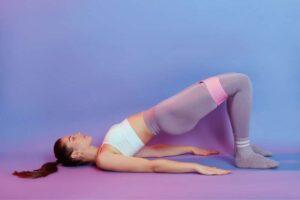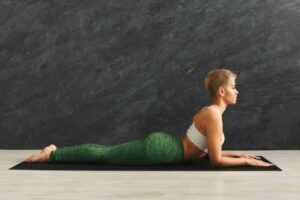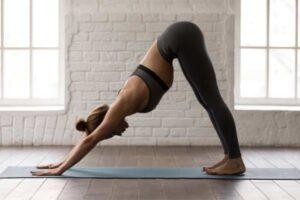Baddha Padmasana or the Locked Lotus Pose is an advanced yoga posture that requires a considerable amount of flexibility and practice to master. This pose is a variation of the classical Lotus pose and is highly beneficial for the mind and body. In this article, we will explore the steps to perform Baddha Padmasana, the benefits it offers, and the precautions that need to be taken while practicing it.
What is Baddha Padmasana (Locked Lotus Pose) ?
Baddha Padmasana is an advanced yoga posture that combines the traditional Lotus pose with a forward bend and a lock. The Sanskrit word “Baddha” means “locked,” and “Padmasana” means “Lotus pose.” In this posture, the feet are placed on top of the opposite thighs, and the hands are interlocked behind the back. Baddha Padmasana is an intense pose that requires a lot of practice, flexibility, and patience to achieve.
Preparing for Baddha Padmasana (Locked Lotus Pose)
Before attempting Baddha Padmasana, it is essential to prepare the body with some warm-up exercises and hip and knee opening exercises. This will help in increasing the flexibility of the hips, knees, and ankles and prevent any injuries.
Warm-up exercises
Start with some simple warm-up exercises like Surya Namaskar, standing forward bend, and cat-cow pose. These poses help in stretching and preparing the spine, hips, and legs.
Hip and knee opening exercises
After warming up, practice some hip and knee opening exercises like the pigeon pose, butterfly pose, and the lizard pose. These exercises help in opening up the hips and increasing the flexibility of the knees.
Steps to perform Baddha Padmasana (Locked Lotus Pose)
Here are the steps to perform Baddha Padmasana:
- Start by sitting in the Lotus pose with both legs crossed and feet placed on top of the opposite thighs.
- Place the hands behind the back and interlock the fingers.
- Inhale deeply and lift the chest upwards.
- Exhale and slowly bend forward from the hips, keeping the spine straight.
- Lower the head towards the floor and bring the interlocked hands towards the head.
- Hold the pose for a few breaths and then release the hands and slowly come back to the starting position.
Common Mistakes to Avoid
Some common mistakes that should be avoided while practicing Baddha Padmasana include:
- Forcing the body into the pose without proper preparation
- Not maintaining a straight spine while bending forward
- Tensing up the shoulders and neck while interlocking the hands
Benefits of Baddha Padmasana (Locked Lotus Pose)
Baddha Padmasana offers numerous physical and mental benefits, including:
Physical Benefits
- Stretches and strengthens the spine, hips, and legs
- Improves digestion and blood circulation
- Relieves lower back pain and sciatica
- Stimulates the abdominal organs and improves digestion
Mental Benefits
- Calms the mind and relieves stress and anxiety
- Improves concentration and focus
- Increases self-awareness and self-confidence
Precautions and Contraindications
Before attempting Baddha Padmasana, it is important to take some precautions and avoid the pose if you have any of the following conditions:
- Knee or ankle injury
- Lower back pain or injury
- High blood pressure or heart problems
- Pregnancy
If you are new to this pose, it is advisable to practice it under the guidance of a certified yoga teacher.
FAQs
No, Baddha Padmasana is an advanced pose that requires a lot of practice and flexibility. Beginners should start with simpler poses and gradually work their way up to advanced poses like Baddha Padmasana.
Practicing Baddha Padmasana regularly can help in improving posture, increasing flexibility, reducing stress and anxiety, and improving overall health and well-being.
Yes, Baddha Padmasana can help in relieving menstrual cramps by stretching and relaxing the muscles in the lower abdomen and hips.
Yes, if you are unable to interlock your hands behind your back, you can use a yoga strap or hold onto your elbows. You can also use a cushion or block under your hips to make the pose more comfortable.
Hold the pose for 30 seconds to 1 minute, and gradually increase the duration as you become more comfortable with the pose.
Conclusion
Baddha Padmasana is an advanced yoga posture that requires a lot of practice, patience, and flexibility. It offers numerous physical and mental benefits and can be a great addition to your yoga practice. However, it is important to take precautions and practice the pose under the guidance of a certified yoga teacher. Remember to listen to your body and avoid any pain or discomfort while practicing this pose.
Learn to Know More About Yoga Poses So You Can Visit Best Yoga School in India and Join 200 Hour Yoga Teacher Training in India and Ayurveda Yoga Teacher Training in India and Kundalini Yoga Teacher Training in India and Aerial Yoga Teacher Training in India and Ashtanga Yoga Teacher Training in India




